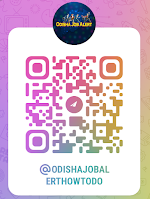**Unlocking the Power of Advanced Learning Techniques**
In a world of rapid technological advancement and constant information influx, mastering how to learn effectively is paramount. Advanced learning techniques empower individuals to process, retain, and apply knowledge more efficiently, equipping them with the tools to excel in both academic and professional settings. This article explores some of the most effective advanced learning strategies, grounded in neuroscience and psychology, to help learners achieve their full potential.
### 1. **Active Recall and Spaced Repetition**
Active recall is the practice of actively retrieving information from memory rather than passively reviewing it. This technique strengthens neural connections, making information more accessible. For instance, instead of re-reading a textbook chapter, a learner could close the book and summarize the key points from memory.
Spaced repetition complements active recall by strategically timing reviews to reinforce learning just as the memory begins to fade. Tools like Anki and Quizlet use algorithms to schedule these reviews, optimizing retention and minimizing study time. Together, these techniques form a powerful duo for long-term learning.
### 2. **Interleaved Practice**
Interleaved practice involves mixing different types of problems or subjects during a study session rather than focusing on one topic exclusively. This approach challenges the brain to adaptively switch between contexts, enhancing problem-solving skills and transfer of knowledge to new situations. For example, a mathematics student might alternate between algebra, geometry, and calculus problems within a single study block.
Studies suggest that while interleaved practice may feel more challenging initially, it leads to deeper learning and better performance over time.
### 3. **Elaborative Interrogation and Self-Explanation**
Elaborative interrogation encourages learners to ask "why" and "how" questions about the material they are studying. This practice promotes a deeper understanding by linking new information to existing knowledge. For example, when learning about photosynthesis, a student might ask, “Why do plants need sunlight?” and explore the underlying biochemical processes.
Self-explanation takes this concept further by having learners articulate their understanding and reasoning aloud or in writing. Explaining concepts in one's own words helps identify knowledge gaps and reinforces comprehension.
### 4. **Dual Coding**
Dual coding combines verbal information with visual representations to enhance learning. By engaging both linguistic and visual cognitive pathways, this method makes material more memorable. For instance, pairing a written explanation of the water cycle with a diagram helps solidify the concept. Mind maps, infographics, and sketch notes are practical tools for implementing dual coding.
### 5. **The Feynman Technique**
Named after physicist Richard Feynman, this technique involves teaching a concept to someone else in simple terms. By breaking down complex ideas into easily digestible language, learners identify areas of confusion and deepen their understanding. The process often uncovers gaps in knowledge that might otherwise go unnoticed.
### 6. **Growth Mindset and Metacognition**
Adopting a growth mindset—the belief that abilities and intelligence can be developed through effort—is foundational to effective learning. A growth mindset fosters resilience, encouraging learners to embrace challenges and persist through setbacks.
Metacognition, or "thinking about thinking," involves reflecting on one's learning strategies and progress. By regularly assessing what works and what doesn’t, learners can refine their approaches and become more self-directed in their educational journey.
### 7. **Chunking Information**
Chunking involves breaking down information into smaller, more manageable units. This method leverages the brain’s limited working memory capacity by grouping related concepts together. For example, instead of memorizing a long string of numbers like 1492177618121945, learners can group them into chunks: 1492, 1776, 1812, 1945.
### 8. **Utilizing Technology and AI**
Modern tools like artificial intelligence and adaptive learning platforms personalize the learning experience. These technologies analyze individual performance and provide tailored content and feedback. Platforms like Duolingo for language learning or Khan Academy for mathematics leverage these advancements to maximize engagement and efficiency.
### Conclusion
Mastering advanced learning techniques can transform the way individuals acquire and apply knowledge. By integrating strategies such as active recall, spaced repetition, interleaved practice, and metacognitive reflection, learners can unlock their potential and stay ahead in an ever-changing world. The key is consistent practice, adaptability, and a commitment to lifelong learning. With these tools, anyone can become a more effective and empowered learner.















